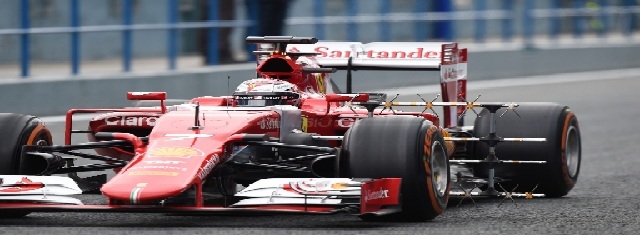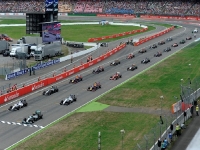Automobiles
INSIDE FORMULA ONE - THE START OF A GRAND PRIX
UNDERSTANDING F1 RACING

(Source: Formula 1)
USPA NEWS -
As the drivers arrive in their grid positions and begin to furiously rev their engines, all of them have one thought in mind - to get to the first corner as quickly as possible. The pressure on the drivers´ shoulders is immense: make a good start and the chance...
As the drivers arrive in their grid positions and begin to furiously rev their engines, all of them have one thought in mind - to get to the first corner as quickly as possible. The pressure on the drivers´ shoulders is immense: make a good start and the chance of a strong result is vastly improved; make a bad start and it could be a very long afternoon“¦
Given the importance of the start, it´s not surprising that drivers are often at their most focused on the grid. Some drivers prepare for the beginning of a race by creating a mental image of the start that they want to make, and, as a result, teams will often try to protect their drivers from overly intrusive media attention on the grid in case it interferes with their concentration.
Given the importance of the start, it´s not surprising that drivers are often at their most focused on the grid. Some drivers prepare for the beginning of a race by creating a mental image of the start that they want to make, and, as a result, teams will often try to protect their drivers from overly intrusive media attention on the grid in case it interferes with their concentration.
The race start procedure is strictly timetabled from the time that the pit lane opens (30 minutes before the race start) to the time that media and other non-essential personnel must leave the grid (10 minutes before the start). In this period, each team´s engineers and mechanics will be working through specific procedures to prepare their cars.
All mechanics must be clear of the grid within 45 seconds of the one minute signal being issued. Then, 15 seconds later, a green light is displayed on the starting gantry to indicate the start of a single formation, or “˜warm up´, lap.
All mechanics must be clear of the grid within 45 seconds of the one minute signal being issued. Then, 15 seconds later, a green light is displayed on the starting gantry to indicate the start of a single formation, or “˜warm up´, lap.
A driver´s actions on this lap are vital to his chances of making a good start - he must ensure he gets enough heat into his brakes and, in particular, his tyres. This is done through hard acceleration (“˜burnouts´) and braking and by weaving back and forth across the track, and whilst from the outside this behaviour may appear random, the drivers are usually following a strict plan agreed with their race engineer to get everything to just the right temperature.
For the driver in pole position, controlling the pace of the formation lap is vital as he does not want to complete the lap so quickly as to be left sitting on the grid for a long period as other cars take their places behind him. This is because while his brakes and tyres will cool, his engine temperature will rise.
Once all the cars have come to a halt on the grid, and the course car and medical cars are also in position further back, the start sequence is initiated by the race director.
Once all the cars have come to a halt on the grid, and the course car and medical cars are also in position further back, the start sequence is initiated by the race director.
The drivers´ eyes will all be fixed on the starting light gantry, where a sequence of five red lights is illuminated. When the red lights go out (after a random time delay over which the race controller has no control) the race is underway. To ensure fair play, each car is monitored electronically and any driver jumping the start is penalised.
...
Source : Formula 1
...
Source : Formula 1
Ruby Bird Yasmina Beddou Formula One Racing Flags The Race Start F1 Circuit Communication Drivers Gps Marshalling System Track
Liability for this article lies with the author, who also holds the copyright. Editorial content from USPA may be quoted on other websites as long as the quote comprises no more than 5% of the entire text, is marked as such and the source is named (via hyperlink).






